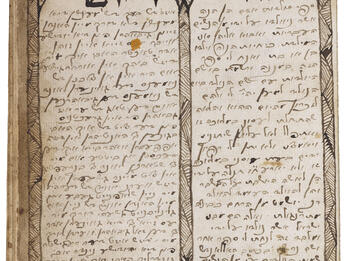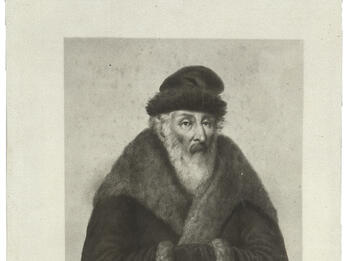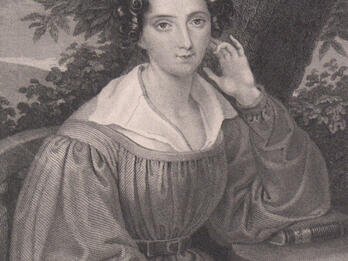A Letter to Chief Rabbi Raffael Natan Tedesco of Trieste
Relle Luzzatto Morschene
1794
Most Distinguished Sir,
The undersigned, your most humble servant, is a wretched woman of twenty-three years of age. I was married for five and a half years to this Mr. Lucio Luzzatto, [but] I was unexpectedly abandoned by him by means of a vile stratagem about three months ago. He believed that with threats he could thus force me to live as his…
Creator Bio
Relle Luzzatto Morschene
When Relle Luzzatto Morschene discovered that her husband had a venereal disease, she decided to divorce him and wished ultimately to marry her physician, Benedetto Frizzi. As a resident of Trieste, she was a subject of the Habsburg monarch, Joseph II, a man deeply affected by the Enlightenment quest for a more rational world of intellectual and religious tolerance. In secular society, Morschene thus had rights founded in natural law to protect her, and she was granted a civil divorce. Morschene’s legal problem was complicated, however, by halakhic stipulations that prevented Frizzi, a kohen, or member of the priestly class, from marrying a divorced woman. How this conflict proceeded was expressed, in part, by the letter she wrote to the chief rabbi of Trieste, a letter that might in fact have been penned by a legal expert but which she herself signed.
Related Guide
Literature and Modernity
Jewish writing in the period spanning 1750–1880 reflects the profound changes that confronted Jews in modernity. Some writers self-consciously broke with traditional and religious models; others definitely embraced it.
Related Guide
Life Writing: Biography, Autobiography, and Ego Documents
The famous and the obscure, women and men, in epitaphs and private letters, ethical wills, cookbooks, and religious reflections, all reflect aspects of Jewish life in a period of great transition.
You may also like
Letters to Richea Gratz

Register of a Jewish Midwife

Title Page of the Register of a Jewish Midwife

Statement of Mourning

Portrait of R. Akiva Eger



